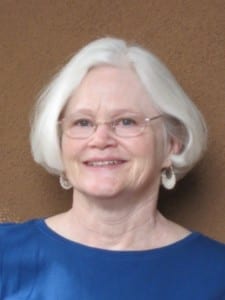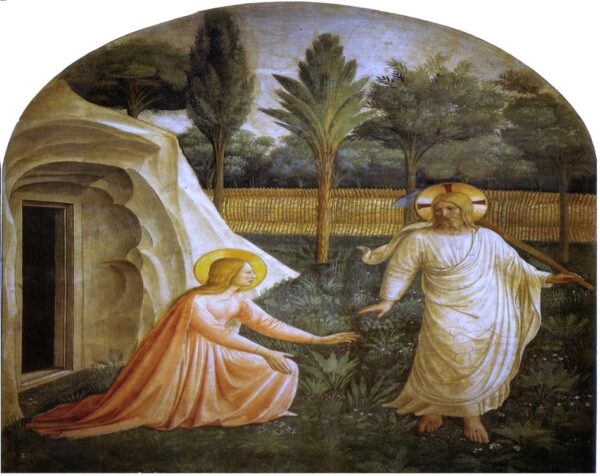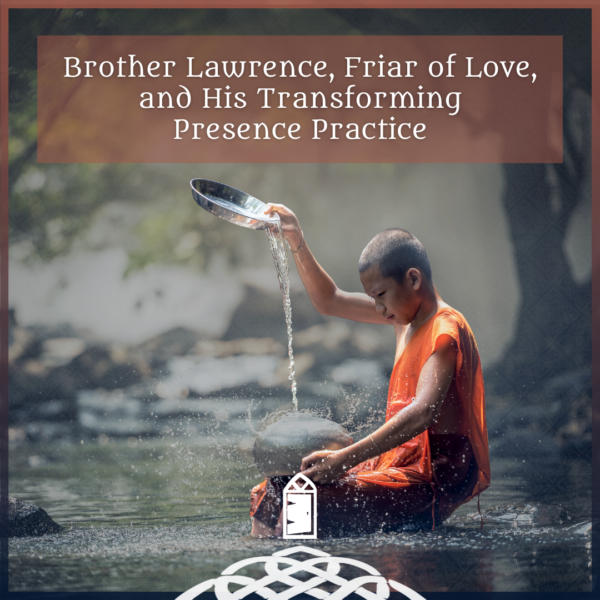 I got to know Mary first through her books and then later had the joy of meeting her in person at a Spiritual Directors International conference. She is an Episcopal priest and the author of several books on how Benedictine practice can be supportive of those living with illness. In her writing I discovered a wise companion and guide and a doorway into the gifts of balance monastic wisdom offers.
I got to know Mary first through her books and then later had the joy of meeting her in person at a Spiritual Directors International conference. She is an Episcopal priest and the author of several books on how Benedictine practice can be supportive of those living with illness. In her writing I discovered a wise companion and guide and a doorway into the gifts of balance monastic wisdom offers.
Leave a comment below and enter for a chance to win a free signed copy of her latest marvelous book on Celtic Christian Spirituality.
“What is a monk in the world?”
Imagine this: a little round boat floating by a dock, gently rocking in the water. There are no oars, just a boat. Imagine getting in the boat, pushing off, and allowing the currents of the water to bear you forth. Imagine trusting those currents, knowing that they will take you to the place to which God is calling you.
For some twenty plus years, I have studied and prayed in ways informed by the Celtic tradition. In that way, men and women made pilgrimage by literally entrusting themselves to the currents of God’s love by getting in coracles (the round boats with no oars). They saw themselves as “peregrini pro Christi”, pilgrims for the love of Christ, who saw the very elements of the earth as messengers and guides of the Holy One.
Drawing from this tradition, I sense that one dimension of living as a monk in the world is allowing every single day to unfold as if it were a journey in a coracle. In our goal-oriented cultures, this practice may seem strange and even goofy. How could it be that holding the events of a day so lightly will serve to deepen compassion? How may we grow if we don’t make those daily lists of things to do, people to meet?
The Celtic monks remind me that each day is a little pilgrimage on the vast sea of God’s love and life. They invite a deeper trust, a deeper letting go, and a willingness to leave the oars behind.
—Mary C. Earle
I love Mary’s invitation to live in a less goal-oriented way and what I call living in a more organic way, tending to the unfolding of our own inner journey, following the threads as they emerge and call us forward.
You can find out more about Mary’s work at her website.
Mary is one of the guest teachers for Birthing the Holy–Advent 2011: Becoming a Monk in the World online retreat (November 27-December 24, 2011). Mary will be reflecting on week 2 and the theme of awakening. Register to join us for a time of deepened exploration of what it means to live contemplatively in the world.






41 Responses
The past fifteen years have been a journey of daily stepping into the coracle. Often the realities of the day force me to reach for the oars. The mindset and worldview of being in the open vessel leads me to encountering the “have-to’s” of life with inner peace and hope. God’s presence rushes over me when least expected.
Walking beside my five year old grandson who struggles with life from behind the screen of mild autism, I find myself constantly in the coracle. Releasing expectations and embracing the graces of what happens when we are together has truly been, and will continue to be, a great gift of the holy.
John Philip Newell continues to teach me through his Celtic writings and through personal engagement on retreats.
I am so glad that you know John Philip’s writings; he and I are dear friends, and I am ever indebted to him for his companioning along the way. I hope you may become acquainted with his newest book of prayers, Praying with the Earth. I’ve been using it over the last several weeks, and it is quite beautiful.
Mary
I like what you said about ‘each day is a little pilgrimage on the vast sea of God’s love and life.’ I put dates on my calendar for long pilgrimages to holy sites, but I like this idea of approaching each day this way. And as I did on pilgrimage in Ireland, I think I would then want to reflect at the end of each day on the places I met God. If we are indeed on the vast sea that is God’s love and life, then there is no place we will not meet God. The point would be to be grateful, to give thanks for whatever place God’s current takes us.
The Eastern Orthodox have a saying: “There is no place where God is not.” I learned that some years ago in a class on Eastern Orthodox theology, and it has become very dear to me as I age. And indeed, the point would be to be grateful, and for gratefulness to shape our core selves.
Mary
A lovely meditation. As a strong introvert I have always felt a pull toward a contemplative life but have never felt called to a strictly monastic life. I have been strongly influenced by Henri Nouwen’s book Out of Solitude, which talks about cycles of solitude and engagement, and how each informs and strengthens the other .
The image of the boat with no oars reminds me of one of my favorite paintings–“The Mystical Boat” by Odilon Redon. Long after discovering Redon’s deeply spiritual art, I purchased a copy of Sister Wendy Beckett’s ‘The Gaze of Love’ and was moved to find “The Mystical Boat” included therein. Her commentary is illuminating:
At first we hardly see the sailor, still less that she has a companion. Both are lost, hidden, secret within the boat’s blueness, the colour of heaven. The two – because the mystic heart is never alone, an angelic Presence, the hidden God, is always with her – do not steer the boat, do not even try to direct it. They sit surrendered, allowing the Spirit to take them where He chooses. The sea is not still for the one who prays, it heaves and is turbulent, but the tossing of the boat is part of the mystic journey. It is the outward stress that makes the surrender of trust vital. The sail alone catches the full brightness of God, and it is that brightness, overhead, not tangible, that dominates the picture. But the brightness blinds the sailor, she cannot see where the Spirit is taking her, and she leans back, at rest. Content in His spiritual choice. It is not in the minutiae of daily living that she abandons choice, but in her prayer. The daily living is the choppy sea, but her prayer is the deep faithful blue of the boat, the bright loving gold of its sail, all that bears her forward in a power not her own.
The older I get, the more I have learned to trust in the power not my own. It has been a struggle to realize that it’s not all about me and what I do–it’s about God and what
s(he) does through me!
Nadine,
Thank you for making this connection to “The Mystical Boat.” I did not know the painting, but looked it up online. I am grateful to you for leading me to this new image, and for the connections offered therein.
Mary
I have a favorite river on which to kayak. Just being on the water, for me, is an encounter with God and God’s creation. But my favorite part is after the currents have been encountered and the wind has been dealt with and I rest in a protected area of the river and just float. Towering reeds surround me, a swan takes off next to me, the birds chatter and the sun warms. And I am reminded that there is always that place of peace and surrender to which I can return. Thank you for the image of the boat without oars the the reliability of God’s currents.
Patricia,
Such a lovely description of floating on the river–a world unto itself, full of vitality and creaturely life. Blessings on your journey on the currents of love.
Mary
Just this morning, I put my to-do list aside and went to see a person in the hospital at the beginning of the day instead of at the end. She can’t talk right now, so we had the most amazing conversation with my voice and her eyes and the silence of holding hands. I think we were in a coracle today with the Holy Spirit guiding our time together. It was wonderful.
I picked up my to do list after I left her, but it was different — less rushed, more attention to the person than the task.
Thanks for giving me a new image for what happened today.
Elizabeth,
Such a beautiful example of the way in which this image of the coracle may help us in daily living! Thank you for telling of this tender encounter, so kindly marked by loving presence.
Peace
Mary
What beautiful word pictures…riding the current, the boat w/o oars, a daily pilgrimage. I’ll just let those images sink in for awhile. Thank you.
And thank you for taking the time to let the images soak in and await the Spirit’s movement.
Peace
Mary
“…a round boat with no oars…” as a mandala artist, this really captures my attention!
Stacy,
I would imagine that for a mandala artist, this imagery is stirring! Thanks for commenting
Mary
This is a lovely image. It reminds me of a profound meditation I had years ago where I was in a boat, floating in the ocean of God’s mercy. As the meditation continued, I realized that my boat was actually resting in God’s hand…
I think we often try to gain a sense of security by thinking that we are in control of our lives or that we know what is going to happen next. While this notion might momentarily give comfort, it is an illusion that later leads to anxiety or depression when reality tells us otherwise. Allowing God’s current to direct us is a much more profound security, once we learn to let go. (I’m still learning…) Perhaps I shall read this book. But I must see where God’s current takes me!
Dear Mary B.,
How wise to wait and see where God’s current of love takes you–in the end, that’s all that matters. And each of us is invited to practice that personal commending of ourselves unto mercy and grace moment by moment–as you so clearly see.
Peace
Mary
Hi Mary,
I am so excited ! I just read parts of your book “on Celtic Christian Spirituality” and plan on ordering it tomorrow! For the past few years I have been drawn to being “A Monk in the World” and to Celtic Spirituality”. Love the works of John O’Donohue and Esther de Waal.
For over 40 years I have been a Music Minister in my church and happen to be singing one of my favorite songs this weekend “St. Patricks breastplate”.
Just read your lines from the book about the “celtic way of seeing God’s presences in the and through all matter…” and to “let go of anxiety and to embrace wonder” !! Fantastic! This is becoming my passion in prayer and song. I look forward to reading your book.
I would love to take the online Advent course on being a Monk but don’t think I can afford it.
Enjoy this beautiful Season of Autumn and all its color and blessing.
In peace,
Pat
Hi Patricia,
Thank you for your comments; you are in such fine company with John O’Donohue and Esther de Waal. May the Breastplate sing in you now and always.
Mary
What a wonderful thought: to travel gently, lightly, with trust in God and in life’s dailiness. The excerpt from Ms. Earle reminds me of this portion of a prayer to the Holy Spirit from the Anglican Order of the Sisters of St. John the Divine, with which I am Associated: “Pray in us and for us, that we, knowing nothing of our future, may confide utterly in you…”
Thank you for introducing Ms. Earle to us!
Thank you, Margaret, for offering this prayer to the Holy Spirit. It well conveys the intention of the coracle imagery, that movement from thinking we know what each day holds to allowing each day to unfold in God’s wisdom. My husband and I are watching “Cranford” (a BBC miniseries on DVD), and in the episode we viewed last night, one character says that her father had invited his children to keep a journal. The task in the journal? At the beginning of the day, to write what one thought might happen. And at the end, to write what had truly transpired.